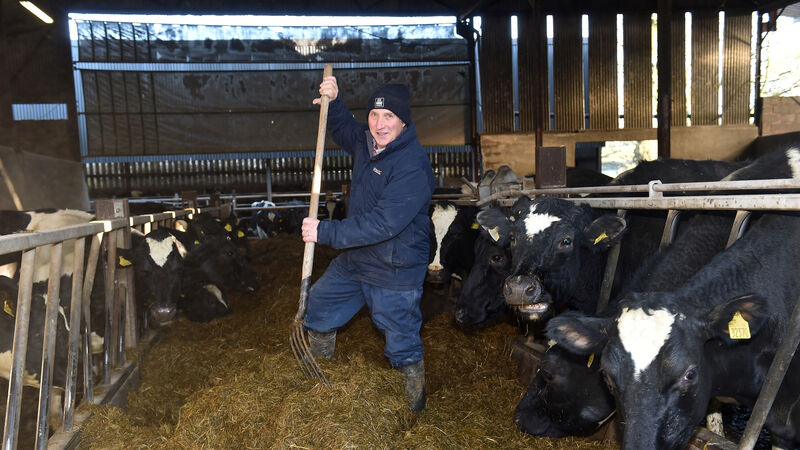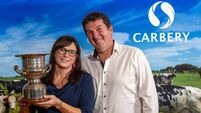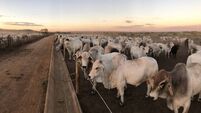Signpost: Breeding for high-value milk rather than just volume

Tim Leader working among his heard of pure breed friesian cattle on his dairy farm at Glenleigh Upper, Kilcourney Rathcool, Co Cork. Picture Dan Linehan
Cows are milking well right now, doing 28 litres and feeding 4kg meals. I expect to finish the 1st round on the 10th of April. Graze outs are great right now.
Although I am grazing heavy covers so ground conditions would need to stay favourable for me to continue to graze out well. Growth is poor right now. I have a demand of 43 kg and a growth of 15kg. If growth doesn’t pick up I could be in trouble. To avoid running into problems in the 2nd round I am making sure fertiliser is out.
With the late spring, I was late getting out with fertiliser but to date, fields have gotten 2300gallons/acre of slurry plus 23units chemical nitrogen in the second split. I will hold the 24-25 day rotation in the second round. The farm will be walked regularly and budget from there.
I have the bulls ordered for this season. I use the Sire Advice Tool on the ICBF website. I find it very useful to select bulls with the traits I want to improve in my herd. I have 100 straws ordered, 20 of them are sexed semen and 11 bulls in total of the 11 bulls selected, I have two specific easy calving bulls to go on the heifers and they will be sexed. The team of bulls have an average EBI of €309 with a fertility sub index of €142. I have an average milk solids sub index of 29kg for the team and 0.26% for fat and 0.20% for protein.
I don’t do a pre-breeding regime as such. I go straight in. I don’t have a monitor and rely on tail painting. The vet is brought in at around day 25 of the breeding season and cows that haven’t been cycling will be examined and treated if necessary.
I am giving sexed semen a go for the first time this year as I hadn’t enough heifers. If it works for me, it's good for the herd but it also helps reduce emissions on the farm. I will breed heifers with sexed semen for one week. These will need to be watched closely to make sure they hold. I use scratch cards on the heifers.
I have sprayed off an area for reseeding, making sure to keep 1.5 metres out from the base of the field boundaries. These are grazing paddocks so I will use a grass-clover mix.
Just to give you an update on the red clover. I have just zero grazed it for the cows. It's an outside block of land so zero grazing was the only way to get it cleaned off without damage in the spring. I was conscious of getting the heavy grass cover off so as to get light down to the clover. It got slurry in January and it got 3,000 gallons of slurry recently. Grainne and Adrian will be out in the next short while to decide what I do next in terms of closing it up for silage.












